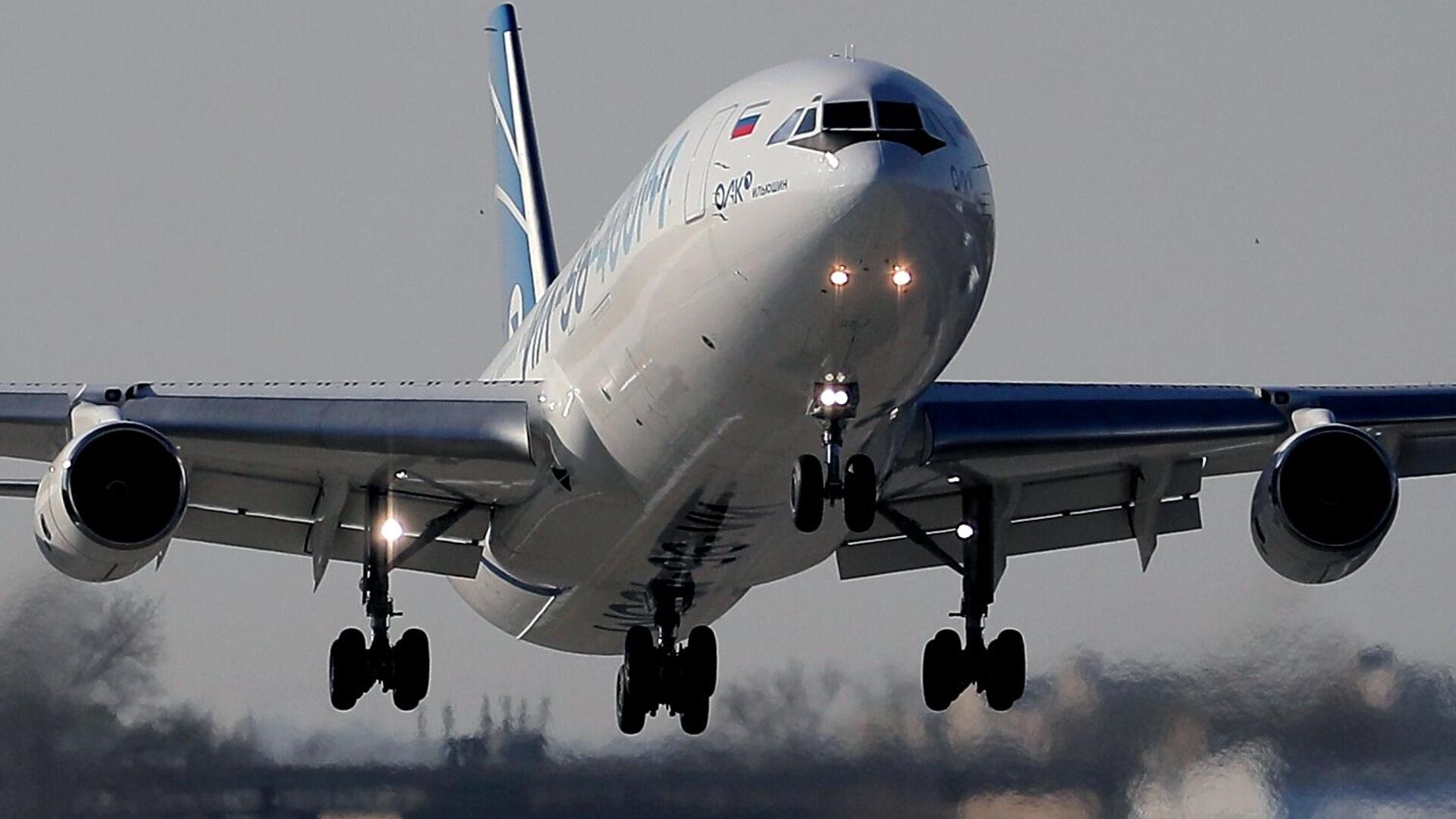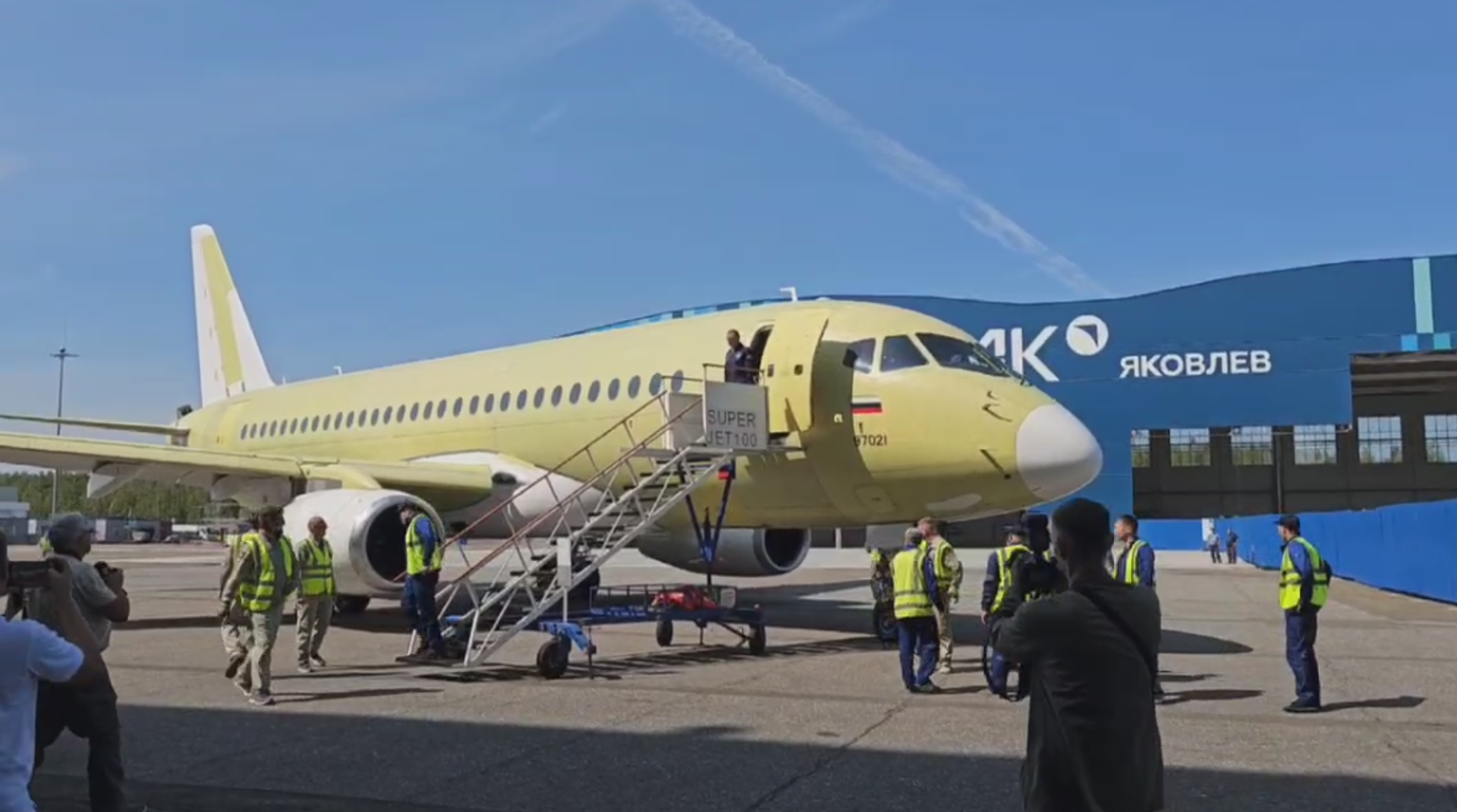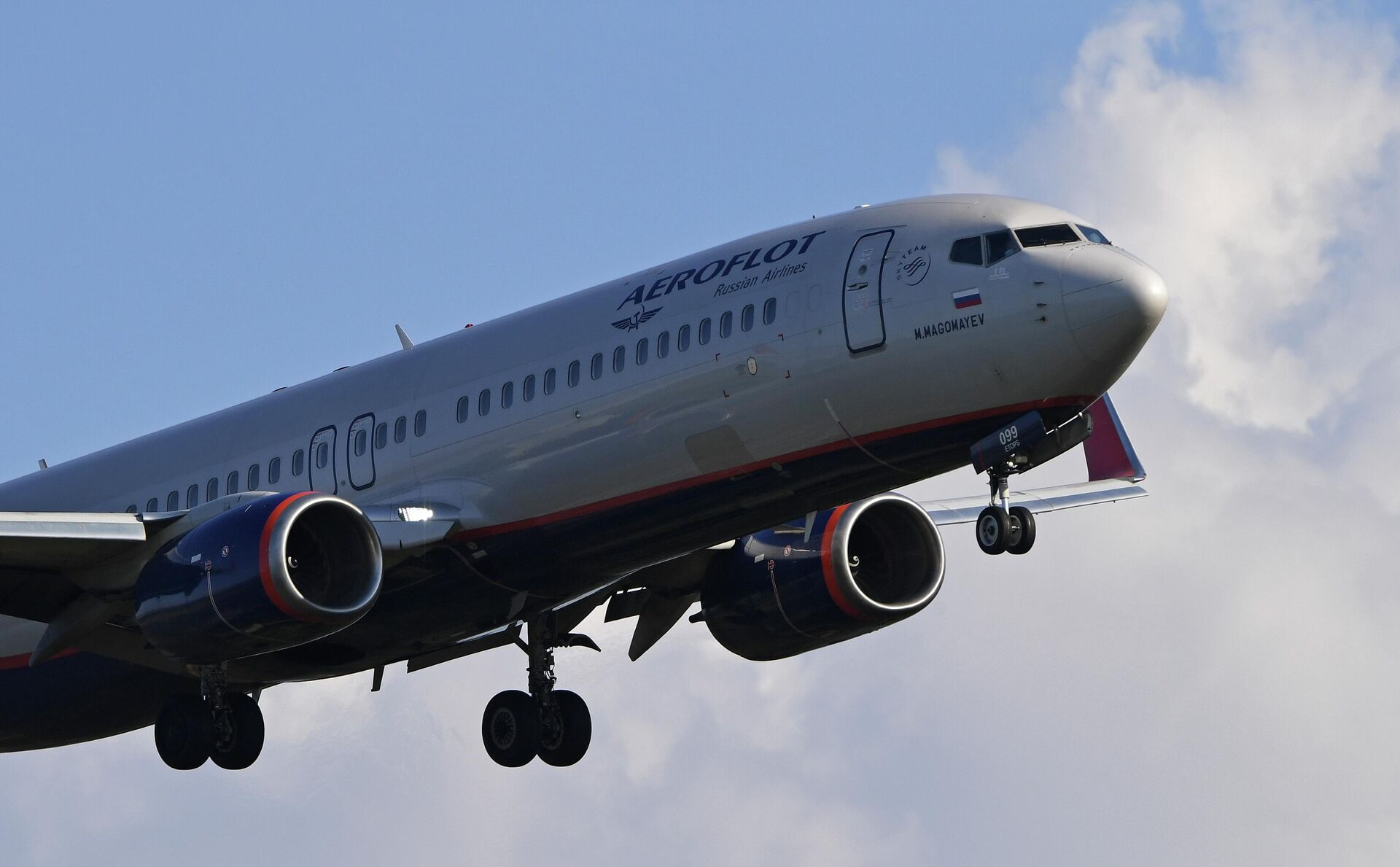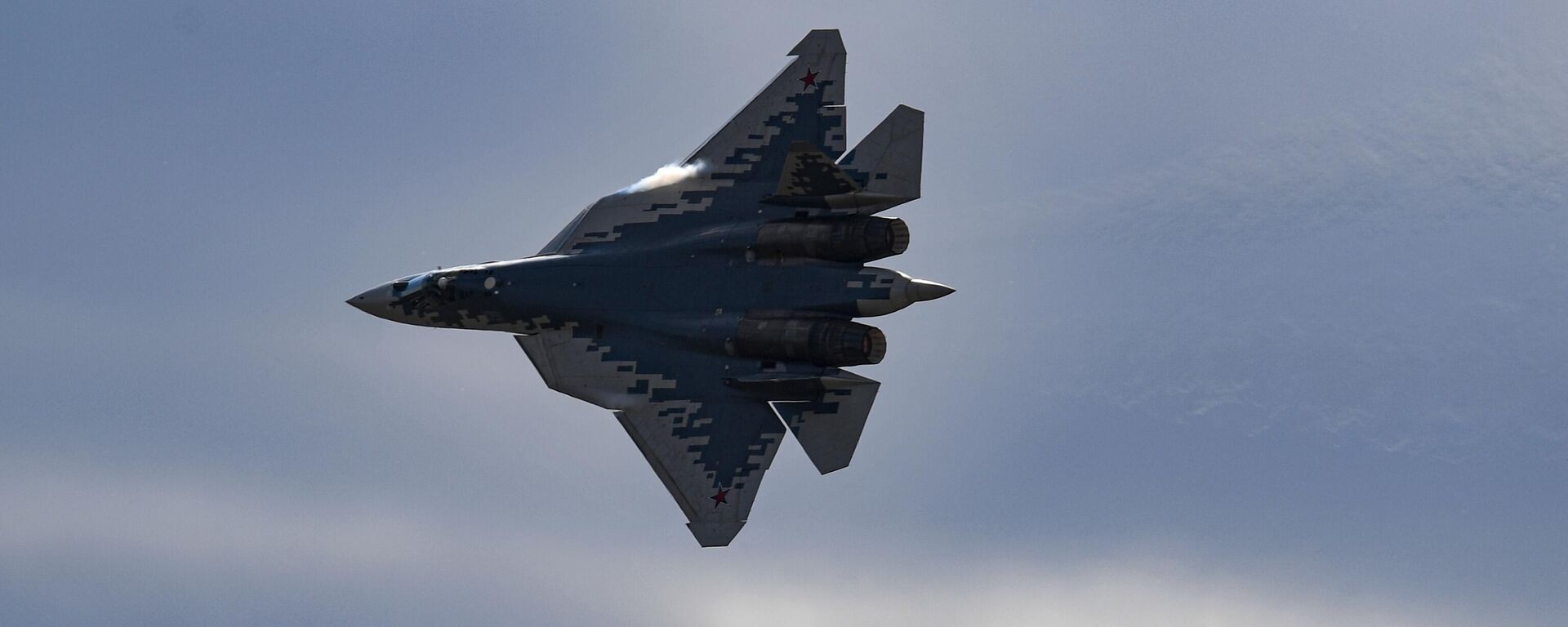https://sputniknews.in/20231216/revival-of-russian-aviation-industry-a-gateway-for-indian-collaboration-5854119.html
Revival of Russian Aviation: Gateway for Indian Collaboration
Revival of Russian Aviation: Gateway for Indian Collaboration
Sputnik India
Military analyst Vijainder K Thakur in his column for Sputnik India, reveals how Russia's commercial aviation industry success opens significant collaborative opportunities for India.
2023-12-16T18:21+0530
2023-12-16T18:21+0530
2023-12-18T11:03+0530
sputnik opinion
russia
india
france
united aircraft corporation (uac)
indian air force (iaf)
sukhoi su-30mki
narendra modi
bengaluru
hindustan aeronautics limited (hal)
https://cdn1.img.sputniknews.in/img/07e7/0c/10/5857779_0:23:1511:873_1920x0_80_0_0_910060ee0fb4410fb40347f845f8c026.jpg
Russia inherited a very robust commercial aircraft industry from the Soviet Union. Soviet era airliners such as the four-engined long-haul wide-body airliner Ilyushin Il-96 and the twin-engined medium-range narrow-body jet airliner Tupolev Tu-204 were very competent designs and they were powered by a competent engine - the Aviadvigatel PS-90.The Ilyushin Il-96-300, which first flew in 1988, features supercritical wings fitted with winglets, a glass cockpit, and a fly-by-wire control system. The Tu-204, which first flew in 1989, also features contemporary technologies such as fly-by-wire control systems, a glass cockpit, and supercritical wings with winglets. The Tu-204 was intended to be broadly equivalent to the Boeing 757.Likewise, the Aviadvigatel PS-90 turbofan engine represents contemporary 1980s engine technology. Its fuel efficiency was double the fuel efficiency of earlier generation Soviet commercial airliner engines. It was as competitive as the Pratt & Whitney PW2000 engine developed in the 1980s.Revival of Russian Commercial Aviation In the early 2000s, the President of Russia with uncanny foresight directed that Russia revive its commercial aircraft industry and build fuel efficient, comfortable and reliable airliners that could compete with western analogs in open market conditions.Sukhoi Superjet SJ-100In 2000, Russia's Sukhoi started development of the country's first airliner - Sukhoi Superjet SJ-100. The pace of development of the regional jet was impressive - it made its maiden flight on May 19, 2008 and its first commercial flight on April 21, 2011. The SJ-100 typically seats 87 to 98 passengers and is powered by two 77–79 kN PowerJet SaM146 turbofans developed by a joint venture between French Safran and Russian NPO Saturn.MS-21 Short Haul AirlinerIn 2007, Russia's Irkut corporation's Yakovlev Design Bureau started development of the MS-21, a single aisle short to medium haul airliner. Once again the pace of development was impressive - it made its maiden flight on May 28, 2017. The standard variant of the aircraft - MS-21-300 - has a capacity of 132–163 passengers in a two-class configuration and 165–211 in a single class, with a range up to 6,000–6,400 km.Domestic Power PlantIn 2010, Russia's Aviadvigatel started development of the PD-14 high bypass turbofan engine to power the MS-21 airliner. The PD-14 was conceived as a successor to the PS-90 and Aviadvigatel developed it as an "engine core" around which it would build other lower or higher thrust engines for use by Russia's new generation commercial airliners.The "engine core" alludes to critical hot parts such as high pressure compressor, combustor and turbine. The letters "PD" stand for forward-looking engine, while the number 14 represents the 14 ton thrust of the engine in basic configuration. PD-14 variants will feature thrust from 8 to 18 tons. The PD-14 family variants will power new generation Russian aircraft. For example, the PD-8 variant will power the short-haul Sukhoi Superjet 100, while the PD-18 variant will power long haul aircraft such as Il-96. The PD-14 core would be used to develop a helicopter engine PD-10B on the world's largest Mi-26 helicopter.Current State of DevelopmentAs of now, development of the PD-14 has been completed. The PD-8 is undergoing a series of bench tests and flight tests as part of the Il-76LL flying laboratory.MS-21 airliners fitted with PD-14s are undergoing trials. A new variant of the Sukhoi SJ-100 powered by the PD-8 engines is under development.Western SanctionsIn early 2022, the US and its Western allies imposed sanctions that brought collaboration between Russian and Western commercial aviation entities to a complete halt. The intent was to derail Russian commercial aviation. It didn't work.Russia's partly revived industry immediately hunkered down to continue development and production of the SSJ-100 regional airliner and the MS-21 medium haul airliners. An immediate decision was taken to substitute Western engines and airframe components in the two aircraft with domestically developed analogs.On April 7, 2022, Russia's Prime Minister Mikhail Mishustin directed that the substitution of domestic assemblies should be completed within 2–3 years, with the percentage of domestic components in the MS-21 to be 97% by 2022–2024, making it independent of imported equipment.In August 2023, a prototype SSJ-100 fitted entirely with domestically produced components flew for the first time. In total, about 40 systems and units were replaced on the import-independent Superjet. The partly redesigned aircraft is now referred to as SSJ-NEW. The second SSJ-NEW prototype is likely to begin its flight test program with domestic PD-8 engines in the near future. Clearly, Western sanctions didn't catch Russia completely on the backfoot, thanks to the foresight of the Russian political leadership.Full Spectrum Commercial Aviation Development On December 8, 2023, the Russian Prime Minister, Mikhail Mishustin, delivered a lecture titled “Creating the future today” at the lecture hall of the Russian Znaniye (Knowledge) Society as part of the Russia International Exhibition and Forum’s educational programme.Here is a look at other commercial aircraft now under development in Russia.IL-96-400 Long Haul AirlinerIn February 2017, it was announced that Russia's United Aircraft Corporation had signed a contract with its subsidiary Ilyushin Aviation Complex for the development of a new version of Ilyushin Il-96-400 wide-body passenger airliner to compete with the Boeing 777-9 and Airbus A350-1000.The Il-96-400 is similar to the Il-96M (see below), but features Russian avionics and engines. It is powered by four Aviadvigatel PS-90A1 (a variant of the PS-90A) turbofans and can carry up to 436 passengers. Typical two-class configuration will have 386 passengers. Range with 315 passengers in a three-class configuration is about 10,000 km. The Il-96M is a stretched variant of the Il-96-300. It features a 10 m fuselage stretch, is 15 tonnes heavier, is fitted with Western-style avionics, and is powered by four Pratt & Whitney PW2337 engines with a thrust rating of 165 kN. Range with 312 passengers in a three-class configuration or 92 tonne payload is about 10,400 km.Regional AirlinersIn view of its vast expanse, harsh terrain and harsh climatic conditions, Russia is developing two turboprop regional airliners besides the SSJ-NEW jet regional liner. The turboprop airliners require less ground support.IL-114-300 Turboprop AirlinerThe IL-114-300 is a 52-64 seat regional airliner like the ATR-42. The aircraft is powered by the newly developed Klimov TV7-117ST-01 turboprop engine. Aerodynamically, the IL-114-300, which first flew in December 2020, is a modernised variant of the IL-114. However, based on its component fit, it is almost a new aircraft.Development of the IL-114-300 was halted in August 2021 following the crash of an IL-112V prototype which is powered by 2 × Klimov TV7-117ST turboprops, a variant of the TV7-117ST-01 which powers the IL-14-300.In September 2023, the Federal Air Transport Agency (Rosaviatsiya) approved major changes in the design of the TV7-117ST family of engines, including the TV7-117ST-01. Flight testing of the IL-114-300 is set to resume by the end of 2023.TV7-117 Engine FamilyTV7-117 represents a family of engines, developed in the post Soviet period, for helicopters and regional aircraft. The engines are manufactured using modern materials, alloys and coatings using contemporary technologies such as digital twins and additive technologies. The engine has a modular design with nine modules that can be replaced in the field, dramatically reducing costs and facilitating easier repair and maintenance. The engine has an electronic-hydro mechanical control system.Ladoga TVRS-44 Turboprop Airliner The aircraft is to be powered by the UEC-Klimov developed TV7-117ST-02 engine, a TV7-117ST engine variant. The TV7-117ST-02 will have a takeoff power of 2400 hp with automatic augmentation up to 2600 hp if one engine fails. It features best-in-class fuel efficiency. Unlike the base engine, it has a closed oil system and a new higher speed aircraft alternator. The TV7-117ST-02 is scheduled to enter serial production in 2025. Ladoga is intended to replace the Soviet (An-24, An-26B-100, Yak-40) and Western (Dash 8 -200, Dash 8Q-300, ATR-42). It has a range of over 1000 km with full flight load.Baikal Utility Aircraft The UZGA LMS-901 Baikal is a utility aircraft produced by UZGA (Ural Works of Civil Aviation). The aircraft was developed as a replacement for the Antonov An-2. The prototype made its maiden flight on January 30, 2022. The aluminium, single-turboprop aeroplane is powered by a GE H80 or a Klimov VK-800. It is planned to carry a 2 t payload or 9–12 passengers over 1,500 km at 300 km/h from short unpaved airstrips.Opportunities for IndiaThe revival of the Russian commercial aviation industry presents Make-in-India tie up opportunities to India. New Russian airliners are now completely Russian and technologically at par with Western analogs. Domestic air travel in India is surging. The time is ripe for the Indian civil aviation manufacturing industry to venture into production of domestic airliners. State enterprise Hindustan Aeronautics Limited (HAL) plans to develop a 50-80 seater regional aircraft in partnership with an overseas OEM with global presence but the project has been languishing since 2016. With Su-30MKI production in India winding down, HAL could easily divert the trained manpower and manufacturing infrastructure to production of the Sukhoi SJ-NEW regional liners. Russia first proposed manufacture of the SSJ-100 in India in 2015. Since then, the aircraft has proven itself in operations and now has been completely indigenised by Russia ruling out any Western roadblocks. In August 2023, United Aircraft Corporation (UAC) CEO Yuri Slyusar spoke with the “Russia-24” television channel about the opportunity. Slyusar added that negotiations are currently underway with Indian colleagues. “It seems to me that negotiations are even more in the interest of the Indian side than ours because we have our Russian Superjet and will continue its production. For India, this represents a significant technological leap forward,” he noted.ConclusionRussia is off to a head start in reviving its commercial aircraft manufacturing industry, but still faces technological challenges with turboprop engines. Russia is not just making rapid strides to catch up with the West, according to the Russian Prime Minister, the country intends to wrest the lead from the West in select domains of civil aviation. These include development of unmanned systems, supersonic civil and electric aircraft, convertoplanes, and airliners capable of vertical takeoff. Having learnt a lesson - to not depend on Western technology whatsoever be the immediate gains - there will likely be no looking back for Russia.
https://sputniknews.in/20231127/makes-sense-for-india-to-buy-su-57-fighter-jets-from-russia-iaf-veteran-5607616.html
russia
india
france
bengaluru
Sputnik India
feedback.hindi@sputniknews.com
+74956456601
MIA „Rossiya Segodnya“
2023
News
en_IN
Sputnik India
feedback.hindi@sputniknews.com
+74956456601
MIA „Rossiya Segodnya“
Sputnik India
feedback.hindi@sputniknews.com
+74956456601
MIA „Rossiya Segodnya“
russia, india, indian air force (iaf), iaf, sukhoi su-30mki, france, united aircraft corporation (uac), uac, narendra mod, modi, bengaluru. hindustan aeronautics limited (hal). hal, lca tejas, tejas, military spending, military equipment, defense sector, military
russia, india, indian air force (iaf), iaf, sukhoi su-30mki, france, united aircraft corporation (uac), uac, narendra mod, modi, bengaluru. hindustan aeronautics limited (hal). hal, lca tejas, tejas, military spending, military equipment, defense sector, military
Revival of Russian Aviation: Gateway for Indian Collaboration
18:21 16.12.2023 (Updated: 11:03 18.12.2023) Military analyst Vijainder K Thakur in his column for Sputnik India, reveals how Russia's commercial aviation industry success opens significant collaborative opportunities for India.
Russia inherited a very robust commercial aircraft industry from the Soviet Union. Soviet era airliners such as the four-engined long-haul wide-body airliner Ilyushin Il-96 and the twin-engined medium-range narrow-body jet airliner Tupolev Tu-204 were very competent designs and they were powered by a competent engine - the Aviadvigatel PS-90.
The Ilyushin Il-96-300, which first flew in 1988, features supercritical wings fitted with winglets, a glass cockpit, and a fly-by-wire control system.
The Tu-204, which first flew in 1989, also features contemporary technologies such as fly-by-wire control systems, a glass cockpit, and supercritical wings with winglets. The Tu-204 was intended to be broadly equivalent to the Boeing 757.
Likewise, the Aviadvigatel PS-90 turbofan engine represents contemporary 1980s engine technology. Its fuel efficiency was double the fuel efficiency of earlier generation Soviet commercial airliner engines. It was as competitive as the Pratt & Whitney PW2000 engine developed in the 1980s.
Revival of Russian Commercial Aviation
In the early 2000s, the
President of Russia with uncanny foresight directed that Russia revive its commercial aircraft industry and build
fuel efficient, comfortable and reliable airliners that could compete with western analogs in open market conditions.
In 2000, Russia's
Sukhoi started development of the country's first airliner -
Sukhoi Superjet SJ-100. The pace of development of the regional jet was impressive - it made its
maiden flight on May 19, 2008 and its first commercial flight on April 21, 2011.
The SJ-100 typically seats 87 to 98 passengers and is powered by two 77–79 kN PowerJet SaM146 turbofans developed by a joint venture between French Safran and Russian NPO Saturn.
MS-21 Short Haul Airliner
In 2007, Russia's Irkut corporation's Yakovlev Design Bureau started development of the MS-21, a single aisle short to medium haul airliner. Once again the pace of development was impressive - it made its maiden flight on May 28, 2017.
The standard variant of the aircraft - MS-21-300 - has a capacity of 132–163 passengers in a two-class configuration and 165–211 in a single class, with a range up to 6,000–6,400 km.
In 2010, Russia's Aviadvigatel started development of the PD-14 high bypass turbofan engine to power the MS-21 airliner. The PD-14 was conceived as a successor to the PS-90 and Aviadvigatel developed it as an "engine core" around which it would build other lower or higher thrust engines for use by Russia's new generation commercial airliners.
The "engine core" alludes to critical hot parts such as high pressure compressor, combustor and turbine.
The letters "PD" stand for forward-looking engine, while the number 14 represents the 14 ton thrust of the engine in basic configuration. PD-14 variants will feature thrust from 8 to 18 tons.
The PD-14 family variants will power new generation
Russian aircraft. For example, the PD-8 variant will power the short-haul Sukhoi Superjet 100, while the PD-18 variant will power long haul aircraft such as Il-96.
The PD-14 core would be used to develop a helicopter engine PD-10B on the world's largest Mi-26 helicopter.
The PD-14 is the first engine in Russia created digitally from scratch, using paperless 3D design modelling. Aviadvigatel first developed a digital twin of the engine, based on an electronic database of engineering calculations and material characteristics. The digital twin supports engine production, its bench and flight tests, as well as the development of operational documents.
Current State of Development
As of now, development of the PD-14 has been completed. The PD-8 is undergoing a series of bench tests and flight tests as part of the Il-76LL flying laboratory.
MS-21 airliners fitted with PD-14s are undergoing trials.
A new variant of the Sukhoi SJ-100 powered by the PD-8 engines is under development.
In early 2022, the US and its Western allies
imposed sanctions that brought collaboration between Russian and Western commercial aviation entities to a complete halt. The intent was to derail Russian commercial aviation.
It didn't work.
Russia's partly revived industry immediately hunkered down to continue development and production of the SSJ-100 regional airliner and the MS-21 medium haul airliners. An immediate decision was taken to substitute Western engines and airframe components in the two aircraft with domestically developed analogs.
On April 7, 2022, Russia's Prime Minister Mikhail Mishustin directed that the substitution of domestic assemblies should be completed within 2–3 years, with the percentage of domestic components in the MS-21 to be 97% by 2022–2024, making it independent of imported equipment.
Despite sanctions, serial production of the MS-21 powered by PD-14 engines for use by commercial airlines is set to begin in 2025. The PD-14 powered variant of the airliner is referred to as MS-21-310.
In August 2023, a prototype SSJ-100 fitted entirely with domestically produced components flew for the first time. In total, about 40 systems and units were replaced on the import-independent Superjet. The partly redesigned aircraft is now referred to as SSJ-NEW.
The second SSJ-NEW prototype is likely to begin its flight test program with domestic PD-8 engines in the near future.
Clearly, Western sanctions didn't catch Russia completely on the backfoot, thanks to the foresight of the Russian political leadership.
Full Spectrum Commercial Aviation Development
On December 8, 2023, the Russian Prime Minister, Mikhail Mishustin, delivered a lecture titled “Creating the future today” at the lecture hall of the Russian Znaniye (Knowledge) Society as part of the Russia International Exhibition and Forum’s educational programme.
During the lecture, the Prime Minister pointed out that Western sanctions had accelerated the revival of Russian aircraft manufacturing. He also referred to other aircraft, besides the MS-21 and SSJ-NEW, under development in Russia that together span the full spectrum of domestic commercial aviation requirements.
Here is a look at other commercial aircraft now under development in Russia.
IL-96-400 Long Haul Airliner
In February 2017, it was announced that Russia's United Aircraft Corporation had signed a contract with its subsidiary Ilyushin Aviation Complex for the development of a new version of Ilyushin Il-96-400 wide-body passenger airliner to compete with the Boeing 777-9 and Airbus A350-1000.
The Il-96-400 is similar to the Il-96M (see below), but features Russian avionics and engines. It is powered by four Aviadvigatel PS-90A1 (a variant of the PS-90A) turbofans and can carry up to 436 passengers. Typical two-class configuration will have 386 passengers. Range with 315 passengers in a three-class configuration is about 10,000 km.
The Il-96M is a stretched variant of the Il-96-300. It features a 10 m fuselage stretch, is 15 tonnes heavier, is fitted with Western-style avionics, and is powered by four Pratt & Whitney PW2337 engines with a thrust rating of 165 kN. Range with 312 passengers in a three-class configuration or 92 tonne payload is about 10,400 km.
In view of its vast expanse, harsh terrain and harsh climatic conditions, Russia is developing two turboprop regional airliners besides the SSJ-NEW jet regional liner. The turboprop airliners require less ground support.
IL-114-300 Turboprop Airliner
The IL-114-300 is a 52-64 seat regional airliner like the ATR-42. The aircraft is powered by the newly developed Klimov TV7-117ST-01 turboprop engine.
Aerodynamically, the IL-114-300, which first flew in December 2020, is a modernised variant of the IL-114. However, based on its component fit, it is almost a new aircraft.
The IL-114-300 is equipped with modern electronic equipment, economical engines, a new digital flight and navigation system, which together significantly improved the performance of the aircraft.
Development of the IL-114-300 was halted in August 2021 following the crash of an IL-112V prototype which is powered by 2 × Klimov TV7-117ST turboprops, a variant of the TV7-117ST-01 which powers the IL-14-300.
In September 2023, the
Federal Air Transport Agency (Rosaviatsiya) approved major changes in the design of the TV7-117ST family of engines, including the TV7-117ST-01.
Flight testing of the IL-114-300 is set to resume by the end of 2023.
TV7-117 represents a family of engines, developed in the post Soviet period, for helicopters and regional aircraft. The engines are manufactured using modern materials, alloys and coatings using contemporary technologies such as digital twins and additive technologies.
The engine has a modular design with nine modules that can be replaced in the field, dramatically reducing costs and facilitating easier repair and maintenance. The engine has an electronic-hydro mechanical control system.
Ladoga TVRS-44 Turboprop Airliner
The 44 seat airliner is being developed by Ural Works of Civil Aviation (UWCA). The clean sheet design features a unique aerodynamic configuration, 100% new airframe, landing gear, systems and equipment. All components are domestically-produced.
The aircraft is to be powered by the UEC-Klimov developed TV7-117ST-02 engine, a TV7-117ST engine variant.
The TV7-117ST-02 will have a takeoff power of 2400 hp with automatic augmentation up to 2600 hp if one engine fails. It features best-in-class fuel efficiency. Unlike the base engine, it has a closed oil system and a new higher speed aircraft alternator.
The TV7-117ST-02 is scheduled to enter serial production in 2025.
Ladoga is intended to replace the Soviet (An-24, An-26B-100, Yak-40) and Western (Dash 8 -200, Dash 8Q-300, ATR-42). It has a range of over 1000 km with full flight load.
The UZGA LMS-901 Baikal is a utility aircraft produced by UZGA (Ural Works of Civil Aviation). The aircraft was developed as a replacement for the Antonov An-2. The prototype made its maiden flight on January 30, 2022. The aluminium, single-turboprop aeroplane is powered by a GE H80 or a Klimov VK-800. It is planned to carry a 2 t payload or 9–12 passengers over 1,500 km at 300 km/h from short unpaved airstrips.
The revival of the Russian commercial aviation industry presents Make-in-India tie up opportunities to India. New Russian airliners are now completely Russian and technologically at par with Western analogs.
Domestic air travel in India is surging. The time is ripe for the Indian civil aviation manufacturing industry to venture into production of domestic airliners. State enterprise
Hindustan Aeronautics Limited (HAL) plans to develop a 50-80 seater regional aircraft in partnership with an overseas OEM with global presence but the project has been languishing since 2016.
With
Su-30MKI production in India winding down, HAL could easily divert the trained manpower and manufacturing infrastructure to production of the
Sukhoi SJ-NEW regional liners.
Russia first proposed manufacture of the SSJ-100 in India in 2015. Since then, the aircraft has proven itself in operations and now has been completely indigenised by Russia ruling out any Western roadblocks.
In August 2023, United Aircraft Corporation (UAC) CEO Yuri Slyusar spoke with the “Russia-24” television channel about the opportunity.
“We still believe that under the import licence at the HAL factory, which produces combat aircraft for the Indian Air Force, where they manufacture Su-30 aircraft – over 270 aircraft have been made there; it’s indeed a significant base, trained personnel, equipment, and refined processes. We could start producing SSJ aircraft for the Indian market there in a fairly short period of time,” he said.
Slyusar added that negotiations are currently underway with Indian colleagues. “It seems to me that negotiations are even more in the interest of the Indian side than ours because we have our Russian Superjet and will continue its production. For India, this represents a significant technological leap forward,” he noted.
Russia is off to a head start in reviving its commercial aircraft manufacturing industry, but still faces technological challenges with turboprop engines.
Russia is not just making rapid strides to catch up with the West, according to the Russian Prime Minister, the country intends to wrest the lead from the West in select domains of civil aviation. These include development of unmanned systems, supersonic civil and electric aircraft, convertoplanes, and airliners capable of vertical takeoff.
Having learnt a lesson - to not depend on Western technology whatsoever be the immediate gains - there will likely be no looking back for Russia.




